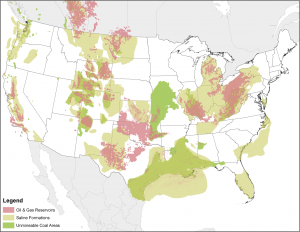Climate change now become a popular topic among those few years. As the demand of resources increased rapidly, people started to pay more attention to the environment. We all know emission of greenhouse gas, such as carbon dioxide and methane, is the main reason that causes climate change. According to EPA (Untied States Environmental Protection Agency), more than 30 billion tons of carbon dioxide (CO2) are produced by human activities each year. Since pre-industrial time, the concentration of carbon dioxide has increased over 40%. People might think that the amount of carbon dioxide emission annually doesn’t have any relation to their daily life, but it really does a lot to our surroundings.
The first time I heard about the terms “carbon sequestration” was during my Chemistry class in high school. Although the conversation of it didn’t last any further, the concept imprinted to my mind. I think it might be a doable solution to climate changes, so I would like to do some further research on this topic.
Since we have so many carbon dioxide in the atmosphere, why can’t we recycle them? I don’t know how many people used to have that idea before, but this is exactly what carbon sequestration all about. Wikipedia explained the term as capturing atmospheric carbon dioxide for long-term storage. This process could reduce a significant amount of carbon dioxide, which could slow down the accumulation of waste gases produced by the fossil fuel combustion. An article in the PCO2R (Plains CO2 Reduction) Partnership website introduced two types of carbon sequestration: terrestrial (also known as biologic) and geologic.
Terrestrial sequestration is a process to capture carbon dioxide through photosynthesis of plants, and transfer the carbon element into roots and stems; keep them in the soil for a long term when the plants dead. However, the disadvantage of terrestrial sequestration is that it only stored the carbon portion of the carbon dioxide gas, this means that if the carbon once had the chance to escape from the soil, it would contact with the oxygen in atmosphere and formed out carbon dioxide again.
(a picture from the PCO2R article that explain the process of terrestrial sequestration)
Geologic sequestration would be a totally different story from terrestrial sequestration. It captures the carbon dioxide gas produced by human activities before it releases, and then transport it into a long term storage deeply underground. A video stated that the carbon dioxide are normally transferred through pipes and injected 4500 meters underground in a typical geologic zone.
(picture found in Wikipedia, explains the process of both terrestrial sequestration and geologic sequestration)
However, like any other types of new forming technology, there are still certain problems need to be overcome in carbon sequestration: the cost of the process, the storage capacity of carbon dioxide and the energy penalty. People need to balance the pros and cons to see if it’s worth it for the process. An article from EPA summarised the possible geologic formations for storage as depleted oil or gas fields, deep coal seams and saline formations. Those areas with certain characterisation could prevent the escaping of carbon dioxide. The map below shows the potential sites for sequestration.
(map found in the article)
To me, I think carbon sequestration might be a doable solution to limit the amount of atmospheric carbon dioxide produced by human activities. Climate change is a big issue that couldn’t be reverse with a single move. Carbon sequestration couldn’t eliminate the hazard of greenhouse gas, but it does good to our environment.
resources:



